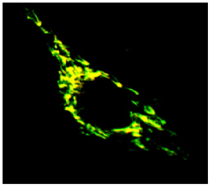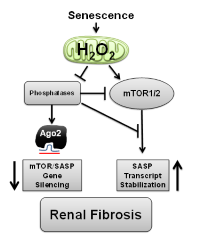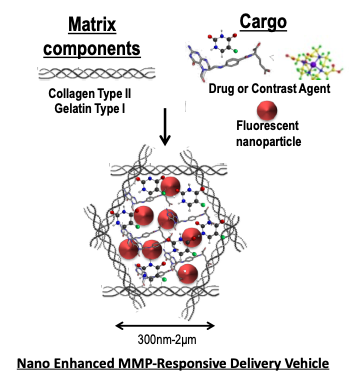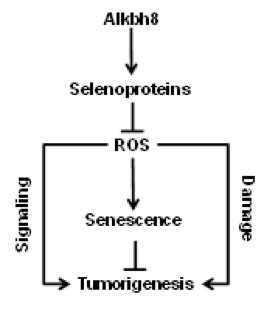Professor Andre Melendez- Principal Investigator
Andres “Andre” Melendez earned his BS in Marine Science & Biology at the University of Tampa which was followed by an MS in Biomedical Sciences at the College of Veterinary Medicine of Virginia Polytechnic Institute and State University where he was indoctrinated into the field of free radical biology. He then transitioned to the State University of New York at Albany where he received a PhD in molecular biology and evaluated how reactive oxygen species contribute to inflammatory disease processes. He completed Post-doctoral training at Georgetown University and Albany Medical College where he studied inflammatory processes that accompany oxygen toxicity and post-partum uterine involution, respectively. In 1997 he was one of the first recipients of an NCI Mentored Career Development Award to Promote Diversity. At Albany Medical College he developed a program directed at understanding the free radical signals that control metastatic disease progression, aging and infectious disease processes and funded by both private and federal funding agencies. In 2011, he joined the College of Nanoscale Science & Engineering at the University at Albany, State University of New York as empire innovation professor & associate head of the nanobioscience constellation. He continues his work on free radical signaling and in the development of next generation nanoparticle-based therapeutic vehicles for the diagnosis and treatment of degenerative disease. He is an associate editor for the bionanoscience section of Experimental Biology & Medicine and serves on the editorial board of Free Radical Biology & Medicine and The FASEB Journal. Dr. Melendez has received numerous awards and has served on many review and advisory boards for the government, academic institutions, scientific societies and companies.
May Y. Lee
PhD Student
My undergraduate at UAlbany research focused on the effect of a novel tRNA modification by Alkbh8, tRNA methyltransferase enzyme, in aging. As numbers of elderly population are growing dramatically, aging and age-related diseases, such as Alzheimer’s disease, cardiovascular, diabetes and even cancer, will be major public health concerns. Research in aging field will provide major contributions to reduce the burden of age associated illness, and enhance quality of life by maintaining health among older adults population. Thus, I became interested in understanding the intricate web of interdependent genetic, biochemical and physiological factors of aging and age-related diseases. After completing my undergraduate program, I decided to strengthen my research skills by pursuing Master of Science degree, which allow me to continue my research from undergraduate.
Undergraduate (Current)
Habben Desta -- SUNY POLY
Aezat Ullah – UAlbany
Former Graduate Students (Graduated)
Doctoral Thesis Committee
Ana Rodriquez: 1999, “Targeted expression of mitochondrial catalase restricts fibrosarcoma growth in vitro and in vivo.” University of Extremadura, Spain
Current Position: Staff Scientist at King's College London
Aparna Ranganathan: 2002, “ Redox control of Interleukin-1 alpha expression” Albany Medical College
Current Position: Assistant Professor, Basic Medical Sciences, University of Arizona College of Medicine, Phoenix, Arizona
Jenny S. Shum: 2002, “Mechanism behind serotonin dependent control of uterine smooth muscle cell collagenase expression” Albany Medical College
Current Position: Associate, Jones Day, Patent Attorney.
Kristin Nelson: 2004, “Transcriptional control mechanisms regulating hydrogen peroxide-dependent matrix metalloproteinase- 1 expression” Albany Medical College.
Current Position: Medical Writer, University of Louisville, Louisville, Kentucky.
Kip Connor: 2005, “Mitochondrial Hydrogen Peroxide control tumor angiogenesis through PTEN oxidation” Albany Medical College
Current Position: Assistant Professor, Harvard Medical School.
Sita Subbaram: 2008, “Chromatin remodeling events controlling redox-dependent MMP-1 transcription”, Albany Medical College
Current Position: Instructor, Albany Medical College
Jaya Dasgupta: 2008, “Redox-control of senescence associated MMP-1 expression”, Albany Medical College.
Current Position: Instructor Biology, Chemistry & Physics Hudson Valley Community College
Amanda Melillo: 2010, “Redox-control of Franscilla tularensis pathogenesis”, Albany Medical College.
Current Position: Program Officer, NIH.
Donald McCarthy: 2014, “Redox-control of the senescence associated secretory phenotype”, SUNY at Albany, CNSE,
Current Position: Post-Doctoral Fellow, UCSF
Anthony Franchini: 2014, “Redox-Regulation FcR-receptor signaling and macrophage function”, Albany Medical College.
Current Position, Post-Doctoral Fellow, University of Rochester Medical Center.
Nicole Flaherty: 2016, “Control of F. Tularensis pathogenesis through TRPM2”
A. Chandrasekaran: 2017, “Redox-control of TRPC6 and the senescence associates secretory phenoytpe”
Master Thesis Committees
Raichal Melathe: 1998, “Elucidation of transcript differences in superoxide dismutate 2 overexpressing tumor cells”, Albany Medical College
Current Position: Laboratory Manager Montefiore Medical Center.
Kwi-hye Kim: 2003, “Redox-dependent control of Nitration through an altered antioxidant enzyme status”, Albany Medical College
Current Position: Postdoctoral Scientist at Eli Lilly and Company
Supriya Kar: 2010, “In vivo antioxidant deficiency augments age-associated MMP-1 expression” Albany Medical College
Current Position: Pediatrician, Hartford CT
Aldo Gammara: 2006, “Redox-control of TIMP expression”, Albany Medical College
Current Position: General Surgery private practice Staten Island, NY.
Lisa Keenan: 2014, “The role proly hydroxylase in the regulation of MMP expression”, University at Albany, CNSE
Ahmad Nazem: 2016, “Characterization of Degradome Sensing Nanoparticles for treatment of degenerative Disease”, University at Albany CNSE
N. Nerlakanti: 2016, “Development of Protease Sensing surface plasmon resonance array”, University at Albany CNSE
Y Lee: Current, “Epitranscriptomic control of selenocysteine utilization and senescense”
Former Post-Doctoral Associates
Nadine Hempel
Associate Professor, Penn State Medical College, Hershey, PA
Assistant Professor, College of Nanoscale Science & Engineering, University at Albany, 2011-15
Postdoctoral fellow, 2007-2011
Toni Bartling
Staff Scientist, GE Health Sciences
Postdoctoral fellow, 2009-2013
Hanqing Ye
Research Associate Hunan University, China
Postdoctoral fellow, 2006-2009
Pauline M. Carrico
Instructor, Biology, University at Albany, 2013-present
Assistant Professor (non-tenure track), 2000-2003, Assistant Professor Empire State College, Saratoga, NY.
Postdoctoral fellow, 1999-2000
Former Undergraduate Students
| Name | Year of Graduation | University |
|---|
| Faith Williams | 1998 | University at Albany |
| Sian Martin | 1998 | University at Albany |
| Lisa Schoonmaker | 1999 | Siena |
| Kevin Regan | 2000 | University at Albany |
| Martin King | 2001 | University of Illinois |
| Cynthia Bernal | 2005 | University at Albany |
| Bharat Yarlagadda | 2005 | Rensselaer Polytechnic Institute |
| Young In Lee | 2005 | Yale University |
| Chidiebere Nwaogu | 2006 | Albany Medical College |
| Harlan Rozenberg | 2007 | University at Albany |
| Bryan Abessi | 2008 | Lemoyne |
| James Joseph | 2009 | University at Albany |
| Jocelyn Laboy | 2009 | University at Albany |
| Katie Wang | 2009 | U. of Rochester |
| Lina Bagepali | 2010 | Rensselaer Polytechnic Institute |
| Michael Taylor | 2010 | Georgetown University |
| Vivek Bhatty | 2010 | University at Albany |
| Nilay Patel | 2011 | Rensselaer Polytechnic Institute |
| Marcelle Tuttle | 2012 | Boston University |
| Eric Kelley | 2012 | University at Albany |
| Brooke Pati | 2012 | University at Albany |
| James McNeilan | 2012 | University at Albany-CNSE |
| Teresa Regis | 2013 | University at Albany |
| May Lee | 2015 | SUNY Polytechnic-CNSE |
| Jeff Richards | 2015 | SUNY Polytechnic-CNSE |
| Leo Bezerra | 2015 | SUNY Polytechnic-CNSE |
| Tristin Schwartze | 2016 | SUNY Polytechnic-CNSE |
| Max Matiaude | 2017 | SUNYPolytechnic-CNSE |
| Russel Shapiro | 2017 | SUNY Polytechnic-CNSE |






